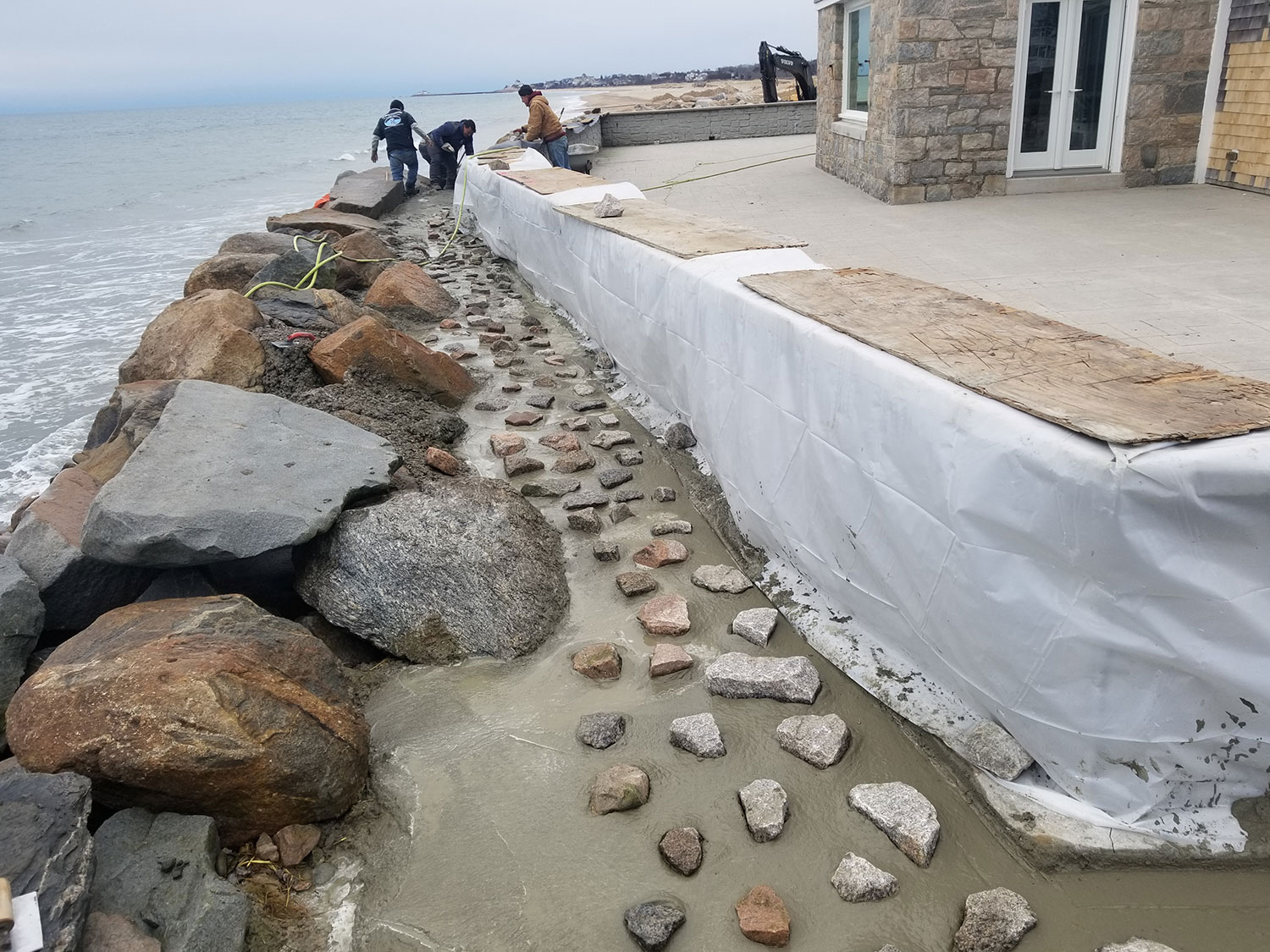A variety of solutions exist to minimize shoreline erosion damage, and vinyl seawalls are one example. These structures are gaining popularity because they provide a long-term solution to an otherwise costly and ongoing problem. With the help of a trusted provider of vinyl seawall construction, including our team at K.E. Braza, you can ensure you are getting the best solution for your property, minimizing ongoing erosion damage.
What is a Vinyl Seawall?
Erosion control from seawall placement is not new, but the use of vinyl to do so has become a more commonly sought-after option because it provides a cost-effective barrier. However, it is important to understand how they work to determine if this is right for your situation.
A vinyl seawall is designed to prevent erosion to stop homes from flooding. It is made of polyvinyl chloride (PVC) as its main component, which is a material easily found in pipes and other durable construction materials. What makes it great for the purpose of a vinyl seawall is that it is a synthetic polymer that does not corrode over time, even when it is completely and constantly submerged in saltwater. This also makes it one of the best options when choosing a durable but low-maintenance option.
As one of the best materials for seawalls, they have become a constant choice for many property owners who want a solid solution that is not likely to require much attention over its lifetime.
What to Expect from the Vinyl Seawall Installation Process
Several components allow vinyl seawalls to provide proper erosion control. Available in numerous colors and textures to fit any aesthetic desired, vinyl seawalls also have several core components that are installed and then pieced together to create a strong wall of protection.
The vinyl sheet piling is the base layer of material. It is driven into the ground to create a foundation from which other layers will be added to it. Most of the time, the piling will go down at least three feet and is then capped with a concrete base. This helps to eliminate the risk of water infiltration.
From there, tiebacks are used, which are long steel bars that run along the wall to create a reinforced level of construction. This can work to prevent gaps and cracks from occurring. These help to reinforce the base of the seawall.
In addition to this, retaining walls are used to help protect soil from slumping. Vinyl caps can be used to cover the panels, creating a smooth and professional finish while also adding to the aesthetic of the barrier. They also help to contribute to the waterproof elements of it. The vinyl bulkhead is then used to prevent water from eroding at the coastline.
Is This the Best Solution for You?
There are numerous benefits of vinyl seawalls, and for many properties, this is the best option. The cost to repair seawall damage right now could be high, but the long-term durability of these vinyl seawall systems makes it ideal. The purpose of vinyl seawall is to keep the water out, and without a lot of maintenance and upkeep requirements, this product does that well.
However, it is best to have a customized quote and project developed for your project. Reach out to K.E. Braza and let our team offer insight into the best materials for seawall protection and erosion control at your property. We take erosion control very seriously and use the most innovative solutions to protect our clients from any difficulties they have over time.

